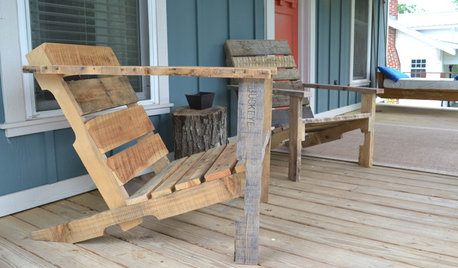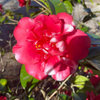It can be fun to breed your own zinnias - Part 22
zen_man
10 years ago
Related Stories

WOODWORKINGBuild Your Own Wooden Deck Chair From a Pallet — for $10!
Take the ecofriendly high road with a low-cost outdoor chair you make yourself
Full Story
PETSWhat Chihuahuas Can Teach Us About Interior Design
Who knew these tiny dogs could be such a huge fount of design tips? Houzzers did
Full Story
HOUSEKEEPINGChoose Your Own Spring Cleaning Plan
Instead of trying to do it all, pick one of these six cleaning approaches that’s right for you now
Full Story
DOORSKnow Your House: Interior Door Parts and Styles
Learn all the possibilities for your doors, and you may never default to the standard six-panel again
Full Story
HOUZZ TVHouzz TV: This Dream Midcentury Home in a Forest Even Has Its Own Train
Original wood ceilings, a cool layout and, yes, a quarter-scale train persuaded these homeowners to take a chance on a run-down property
Full Story
INSPIRING GARDENSWhat We Can Learn From Longwood Gardens’ New Meadow
Sustainability, ecology, native plant communities ... this public garden is brimming with lessons on horticulture for home gardeners
Full Story
GARDENING FOR BUTTERFLIESA Quick-Start Guide to Bird-Watching for Fun and Learning
Set out some seed and grab your field guide. Bird-watching is an easy, entertaining and educational activity for the whole family
Full Story
SMALL HOMESCan You Live a Full Life in 220 Square Feet?
Adjusting mind-sets along with furniture may be the key to happiness for tiny-home dwellers
Full Story
LIFEThe Polite House: How Can I Kindly Get Party Guests to Use Coasters?
Here’s how to handle the age-old entertaining conundrum to protect your furniture — and friendships
Full Story
PETS5 Finishes Pets and Kids Can’t Destroy — and 5 to Avoid
Save your sanity and your decorating budget by choosing materials and surfaces that can stand up to abuse
Full Story






docmom_gw
zen_manOriginal Author
Related Professionals
Londonderry Landscape Architects & Landscape Designers · Foothill Ranch Landscape Architects & Landscape Designers · Glendora Landscape Architects & Landscape Designers · Kyle Landscape Architects & Landscape Designers · Suffern Landscape Architects & Landscape Designers · Americus Landscape Contractors · Clayton Landscape Contractors · Fountain Valley Landscape Contractors · Hayward Landscape Contractors · North Lauderdale Landscape Contractors · Petaluma Landscape Contractors · Lauderdale Lakes Decks, Patios & Outdoor Enclosures · Olathe Decks, Patios & Outdoor Enclosures · Quincy Decks, Patios & Outdoor Enclosures · Salem Decks, Patios & Outdoor Enclosuresjackier_gardener
goclon
docmom_gw
zen_manOriginal Author
jackier_gardener
goclon
telescody
veggieswirl
docmom_gw
zen_manOriginal Author
zen_manOriginal Author
zen_manOriginal Author
jackier_gardener
zen_manOriginal Author
goclon
zen_manOriginal Author
telescody
zen_manOriginal Author
goclon
zen_manOriginal Author
jackier_gardener
zen_manOriginal Author
goclon
zen_manOriginal Author
jackier_gardener
zen_manOriginal Author
docmom_gw
zen_manOriginal Author
telescody
zen_manOriginal Author
zen_manOriginal Author
goclon
zen_manOriginal Author
telescody
zen_manOriginal Author
docmom_gw
zen_manOriginal Author
docmom_gw
jasonmendez2010
zen_manOriginal Author
jasonmendez2010
zen_manOriginal Author
zen_manOriginal Author
zen_manOriginal Author
docmom_gw
telescody
zen_manOriginal Author
jackier_gardener